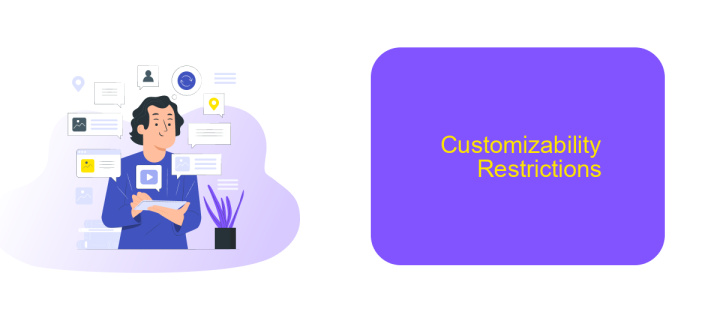Risks of Using No-Code for Mobile Development
No-code platforms have revolutionized mobile development by enabling non-developers to create applications quickly and affordably. However, this convenience comes with its own set of risks. From limited customization options and security vulnerabilities to scalability issues, relying solely on no-code solutions can pose significant challenges. This article delves into the potential pitfalls of using no-code for mobile development, offering insights to help you make informed decisions.
Introduction
No-code platforms have revolutionized the way businesses approach mobile app development. By eliminating the need for extensive coding knowledge, these platforms enable a broader range of individuals to create functional and visually appealing mobile applications. However, while the benefits are significant, there are also inherent risks associated with relying on no-code solutions for mobile development.
- Limited customization options
- Scalability concerns
- Security vulnerabilities
- Dependence on third-party platforms
One crucial aspect to consider is the integration of various services and APIs to enhance app functionality. Platforms like ApiX-Drive can facilitate these integrations, making it easier to connect your no-code app with external services. Nevertheless, the ease of integration does not completely mitigate the risks mentioned above. Understanding these potential pitfalls is essential for making informed decisions when opting for no-code mobile development solutions.
Security Concerns

No-code platforms can introduce significant security concerns, particularly when it comes to data privacy and protection. Many of these tools do not offer the same level of security measures as traditional development environments. This lack of robust security features can make applications built on no-code platforms more susceptible to breaches, data leaks, and unauthorized access. Developers using no-code tools must be vigilant about the security protocols they implement, ensuring they adhere to best practices for data encryption and user authentication.
Another critical issue is the integration of third-party services. No-code platforms often rely on external APIs to extend functionality, which can introduce vulnerabilities if not properly managed. For instance, using integration services like ApiX-Drive can simplify the process, but developers need to ensure that these integrations are secure and comply with industry standards. Regular audits and updates are essential to mitigate risks associated with third-party services, ensuring that all data exchanges are encrypted and secure.
Performance and Scalability Limitations

No-code platforms offer a quick and accessible way to develop mobile applications, but they come with performance and scalability limitations. These limitations can hinder the app's ability to handle increased user loads and complex functionalities, which are crucial for long-term success.
- Resource Constraints: No-code platforms often have limited computational resources, which can lead to slower performance as the user base grows.
- Customization Limits: The predefined components and templates may not be optimized for high performance, causing bottlenecks in processing and data handling.
- Integration Challenges: Integrating third-party services may be less efficient, although platforms like ApiX-Drive can help streamline these integrations, they might still not match the efficiency of custom-coded solutions.
While no-code solutions can be ideal for prototyping and small-scale applications, they may struggle under the demands of a growing user base and complex functionalities. Therefore, it's essential to consider these limitations and plan for potential migration to more robust solutions as the app scales.
Customizability Restrictions

No-code platforms offer a simplified approach to mobile development, but they come with significant customizability restrictions. These platforms often provide limited flexibility, which can hinder the creation of unique, tailored applications.
Developers may find that the predefined templates and components restrict their ability to implement specific functionalities or design elements. This lack of customization can be a major drawback for businesses with unique requirements or those aiming to stand out in a competitive market.
- Limited design options
- Inflexible templates
- Restricted functionality
- Challenges in integrating third-party services
For instance, integrating third-party services such as ApiX-Drive can be cumbersome due to the limitations of no-code platforms. While ApiX-Drive offers robust solutions for API integration, leveraging these within a no-code environment may require workarounds or additional tools. Consequently, businesses might struggle to achieve the same level of functionality and customization that traditional coding offers.
- Automate the work of an online store or landing
- Empower through integration
- Don't spend money on programmers and integrators
- Save time by automating routine tasks
Vendor Lock-in and Dependency Risks
One of the significant risks of using no-code platforms for mobile development is vendor lock-in. When you rely heavily on a specific no-code platform, you become dependent on that vendor's ecosystem. This dependency can be problematic if the vendor changes their pricing model, discontinues certain features, or even goes out of business. Migrating your application to another platform can be complex and costly, especially if the new platform does not support the same features or technologies.
Another concern is the dependency on third-party services for integrations. While no-code platforms often provide easy ways to integrate with other services, these integrations can create additional layers of dependency. For example, using a service like ApiX-Drive to manage integrations can simplify the process, but it also means that your application's functionality is tied to the availability and reliability of that service. If ApiX-Drive experiences downtime or changes its API, it could disrupt your application's performance, leading to potential business risks.
FAQ
What are the main limitations of no-code platforms for mobile development?
Is it possible to integrate third-party services with no-code mobile apps?
How secure are no-code mobile apps?
Can no-code platforms handle complex business logic?
Are no-code mobile apps suitable for all types of businesses?
Apix-Drive is a universal tool that will quickly streamline any workflow, freeing you from routine and possible financial losses. Try ApiX-Drive in action and see how useful it is for you personally. In the meantime, when you are setting up connections between systems, think about where you are investing your free time, because now you will have much more of it.


